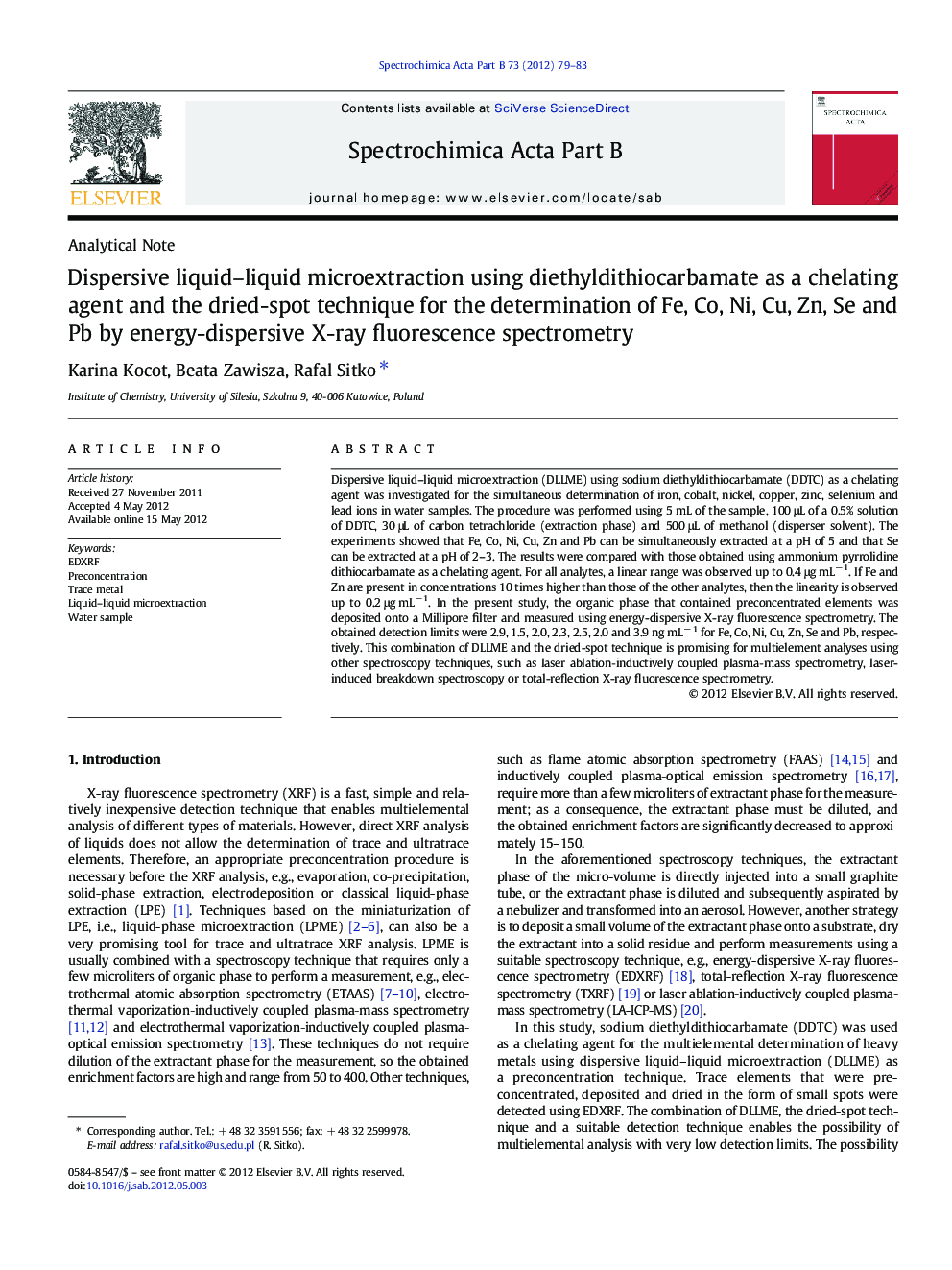| Article ID | Journal | Published Year | Pages | File Type |
|---|---|---|---|---|
| 1240047 | Spectrochimica Acta Part B: Atomic Spectroscopy | 2012 | 5 Pages |
Dispersive liquid–liquid microextraction (DLLME) using sodium diethyldithiocarbamate (DDTC) as a chelating agent was investigated for the simultaneous determination of iron, cobalt, nickel, copper, zinc, selenium and lead ions in water samples. The procedure was performed using 5 mL of the sample, 100 μL of a 0.5% solution of DDTC, 30 μL of carbon tetrachloride (extraction phase) and 500 μL of methanol (disperser solvent). The experiments showed that Fe, Co, Ni, Cu, Zn and Pb can be simultaneously extracted at a pH of 5 and that Se can be extracted at a pH of 2–3. The results were compared with those obtained using ammonium pyrrolidine dithiocarbamate as a chelating agent. For all analytes, a linear range was observed up to 0.4 μg mL− 1. If Fe and Zn are present in concentrations 10 times higher than those of the other analytes, then the linearity is observed up to 0.2 μg mL− 1. In the present study, the organic phase that contained preconcentrated elements was deposited onto a Millipore filter and measured using energy-dispersive X-ray fluorescence spectrometry. The obtained detection limits were 2.9, 1.5, 2.0, 2.3, 2.5, 2.0 and 3.9 ng mL− 1 for Fe, Co, Ni, Cu, Zn, Se and Pb, respectively. This combination of DLLME and the dried-spot technique is promising for multielement analyses using other spectroscopy techniques, such as laser ablation‐inductively coupled plasma‐mass spectrometry, laser-induced breakdown spectroscopy or total-reflection X-ray fluorescence spectrometry.
► Multielement trace analysis using dried-spot technique and dispersive liquid–liquid microextraction. ► Possibility of combination of LPME with EDXRF, LIBS or LA-ICP-MS. ► Comparison of APDC and DDTC as chelating agents.
